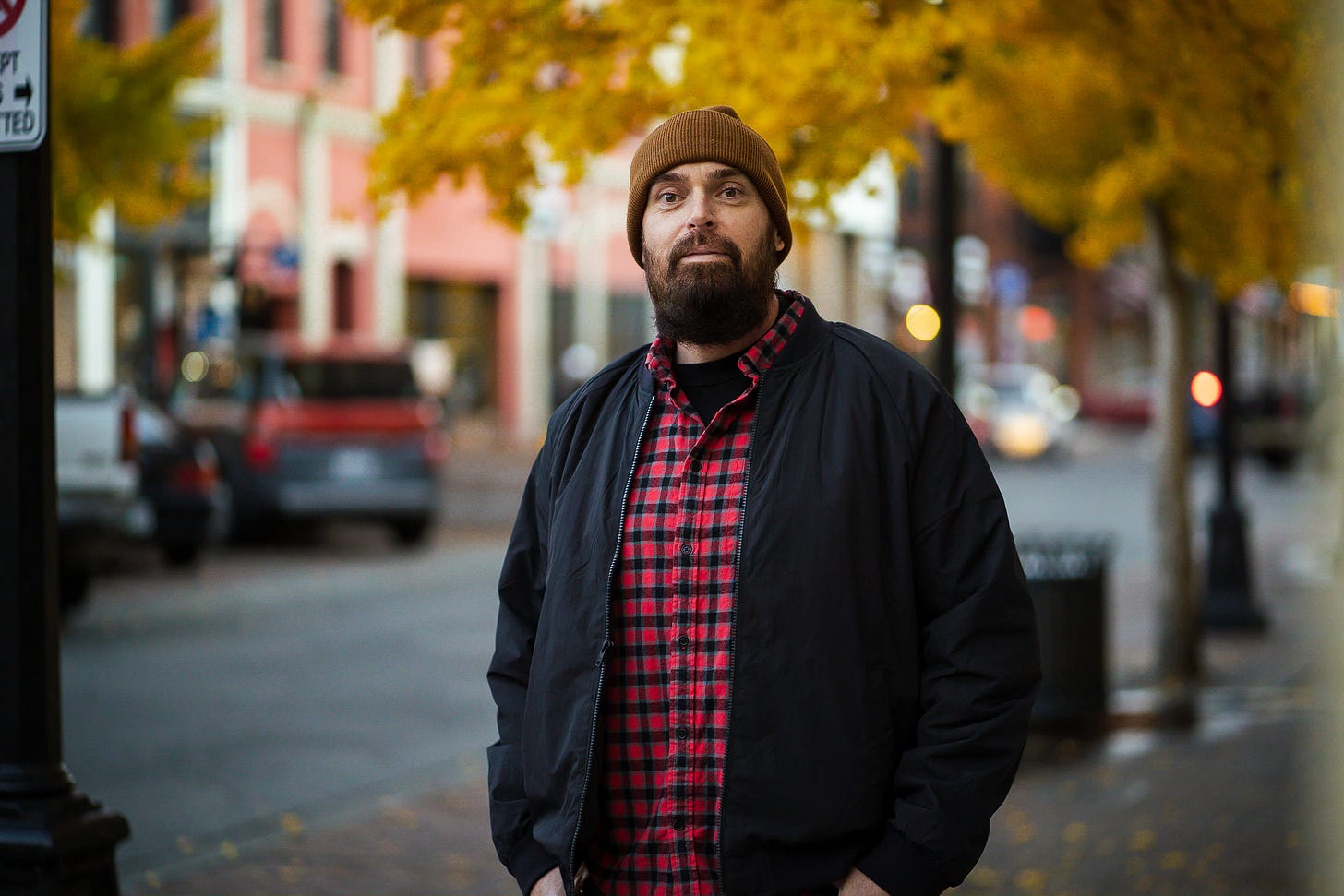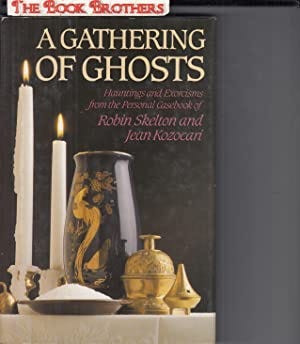Island History Notable: Shanon Sinn enlightens history with haunting stories
Author Shanon Sinn discusses the history of Halloween on the Island, what lessons ghost stories can teach us, and old-timey sensationalist writers.
Shanon Sinn is a nonfiction and fiction writer and the author of the BC and Amazon bestseller, The Haunting of Vancouver Island. The book became an instant classic when it was first published in 2017. Sinn is currently working on a sequel to The Haunting of Vancouver Island that will navigate beyond dry land and into ocean-based ghost stories, folklore, and “sealore” of the BC coast.
We emailed him a couple weeks before Halloween in hopes of getting an interview. As the Island’s ghost guy, Shanon is busy this time of year and was kind enough to spare a moment to chat.
When we spoke, Sinn was working on a presentation for an Island-based historical society. That presentation, suitably, was about the history of Halloween on Vancouver Island. Here he is discussing that story:
Shanon: I have clippings from digitized newspapers starting from around 1864. In them Halloween is mentioned as, “people from Scotland will remember the old holiday back home.” Halloween starts appearing more often towards 1888.
It was clearly a cultural holiday. It’s Scottish and Irish, and there were so many Scots on the Island. Over time, Halloween started to become mainstream, like everybody celebrating it, not just the Scottish people. Then it started to take on some of the characteristics we recognize today.
The old stuff, that was more about pranks and apples—apples were pretty big. Candy was not really a thing. It was pretty late, around 1950, where you started seeing ads with candies with actual images of Halloween on them.
It’s interesting how it evolved. What we’ve got going on today is pretty extreme compared to how it started.
Dave: When did you start to notice the holiday become more commercialized?
Shanon: It happened gradually. In 1884 there are concerts starting to happen. And by 1888, people are being warned about their gates because people would steal gates or move them. That was a huge prank. There were some great articles in Nanaimo’s newspaper about it.
Between 1890 and 1899 was the era of pranks. [Pranksters] would tie a secondary rope to the church bell, hide, and then start to ring the church bell. Of course, people would think it was a ghost until they figured it out.
From 1900 to 1908 socials and concerts became more common throughout B.C. The ads in 1902 and 1903 for men’s clothing had Jack O’ Lanterns with top hats on them. Or whatever they called them at the time, fedoras. (They weren’t quite like the old Victorian top hats.) There are a couple of more ads in the early 1900s listing apples or postcards for sale, and stationery and stuff.
1909 was the first Halloween feature I found that was almost a full page with images of witches and all that stuff plus more clothing ads. In 1919, there was a Halloween Chiclet gum ad. It’s interesting because it says, after the party, after people have eaten their apples, and after people have socialized, pull out Chiclets. So, it’s clear there wasn’t a bunch of candy before this moment. Because it’s only an after-the-event thing they are trying to promote.
In the 1930s, there are Halloween movie ads in the Province newspaper for Dracula and Frankenstein. During the Second World War, they talk about candies not being plentiful. I looked into the back story of that, and it was the sugar rationing that was going on. Around 1948, the newspapers start to show more photographs of children in costumes.
There was a lot of cultural insensitivity, as well. For example, a 1950 clipping from Vancouver Sun talked about having a “Halloween hobo party.” It shows kids dressed up as people experiencing homelessness. It says you can have an open fire and roast stuff—that wouldn’t fly today.
Then in 1955 to 1962 Halloween becomes more commercialized with brand targeting in newspapers across the province. It went from the store itself having an ad to the actual brand. Coca-Cola having a Halloween ad, for example.
I’ve put a lot of work into this presentation. I’ll have 90 images to show them. That’s going to be the bulk of my presentation. But because people expect it, I have a couple of ghost stories to share, as well. Otherwise, people might be disappointed.
Dave: Totally, you’re Vancouver Island’s ghost-story teller in a lot of ways. In research for this interview, I came across previous interviews you’ve done. One of the things that really struck me was how you say ghost stories are teachers of history. I’d like to ask you more about that. What’s the most important revelation in your eyes that you came to understand about Vancouver Island history during the research for your book?
Shanon: Well, that’s a big question. First of all, when I was researching the White Lady of Thetis Cove, which is connected to the Four Mile Inn in Victoria, I found so many historical inaccuracies both on their website and by people writing about its history. That made me stop. It would take me a whole day to do the research for one paragraph, because I had to have the evidence to back up what I was saying.
For example, for the main family that lived there, Peter and Elizabeth Calvert, everyone said they had met on the Norman Morison, which is basically Vancouver Island’s Mayflower. This version of the story is in historical books and is very prevalent. When I looked at the records though, he wasn’t even on that ship, and she was two years old when it arrived.
That chapter set the tone for my book as I had to use sources and say things like, “according to this record,” or “according to this book.” Otherwise, I might not have even written the book this way. So, that was really eye opening. The Victoria area is riddled with these inaccuracies in ghost stories.
The second thing I was going to say about this has to do with the slandering of a man named Richard Johnson. He was an officer of the Black Pioneer Rifles, and they were discriminated against. [Johnson] spoke out against this, so he was an early civil rights advocate for Victoria. The freed slaves here were being treated like garbage. There are records of people throwing stuff at them in the theaters, and it’s just horrible to read.
So, the [Black] community was kind of forced out of Victoria. The Pioneer Rifles were disbanded, and, a few years later, [Johnson] passed away in Metchosin. He was buried at the old cemetery in Victoria.
But the story today has been changed since. He has a pseudo name. They call him Richard “Soap and Suds” Johnson. They say his apparition appears and pretends to cut his own throat. He basically chases white teenagers around. When people tell this story, it’s problematic because he seems to be amped up as scarier because he is non-white.

Also, people never talk about all the civil rights things he was doing and that he was a leader. Plus the suicide didn’t happen because they had the ceremony at the church. But the fake story is that he killed himself because Victoria disbanded the Pioneer Rifles.
It was really eye opening and I was just like, this isn’t cool. It’s something that really stuck with me. Here, this guy lived this exemplary life and he’s just being slandered, right?
So, it’s kind of like a historical teaching. It seems wild to me there are certain events that happened, that over time would have probably been forgotten, definitely forgotten by the general public. When ghost stories are looked at more critically, it brings up all sorts of issues at the time to do with, you know, what was going on with governance of Indigenous people and non-white people and so on.
Dave: Totally. And yeah, ghost stories seem like a really good example of that happening. I think criminal stories are also a common one, where just because there is a horrendous crime involved, people remember it more. Often the stories get over sensationalized.
That brings me to something I noticed you mention in the Hepburn Stone story you wrote recently. There are writers from early BC, especially B.A. McKelvie, a prolific writer and editor in the early 20th century, that took so many leaps with the truth in his stories.

Shanon: Yeah, definitely. Another big one I’ve come across is D.H. Higgins, who was an early Colonist, editor. He wrote a couple of books like The Mystic Spring and The Passing of a Race. When you look at his stuff, it’s the same thing. He’s twisting details and making these giant leaps. I recently read a book by Peter Johnson that says [Higgins] was pretty much responsible for getting some Hesquiat Indigenous people executed because he made up these stories that they raped a shipwreck victim from the John Bright. It was horrible. Higgins was a big name in the late 1800s and early 1900s.
Dave: The power these people had to sway public opinion was tremendous.
Shanon: Especially then when there was only one news source. I find a lot of them did step into the ghost story world too, like B.A. McKenzie and Higgins. Another more modern one is Robin Skelton, who was the founder of UVic’s creative writing program. He’s like super revered but some of the ghost stories he tells, again, the history is completely made up.
When he wrote about Brother XII and about their land, he said it was an Indigenous sacrifice place and that they would do body dumps of slaves there. Super, super racist, and this is the 1970s and 1980s. It’s not even that long ago.
He’s well known for one of his books, A Gathering of Ghosts. It has a chapter in it called “The Indigenous Inheritance.” He actually says that white people are the strong race. The whole chapter is about all these places that are haunted because of Indigenous history.

I’m just like, man, how is this mainstream [narrative] still being accepted today? Like I mentioned before, the problem I have is that some of the people involved in the paranormal community are actual historians, and they’re not challenging this stuff. So, they’re kind of perpetuating these myths that are harmful to whole groups of people. It’s not flattering when Indigenous people are villainized or when a haunting all of a sudden has a made up Indigenous graveyard attached to it or whatever.
Dave: Very interesting. I’m amazed so much can be gleaned from our local ghost stories—good and bad. Unfortunately, that’s about all the time we have today. Thanks so much for speaking with me!
You can read more about Shannon Sinn’s work on his blog. Keep an eye out for his forthcoming Haunting sequel. Vancouverislandhistory.com will be providing updates on its release.








Thanks, Dave. Fake News from the past you might say.